What's New
Displaying results 3761 - 3770 of 4914

Resource | Publications,
Gains continue to be made in the response to the global HIV epidemic. New HIV infections are falling, fewer people are dying of AIDS-related causes and more people with HIV are living longer.
There were 2.7 million [2.4 million–2.9 million] new HIV infections in 2010, down 21% from the peak of the global epidemic in 1997. HIV incidence has fallen in 33 countries, 22 of them in sub-Saharan Africa, the region most affected by the AIDS epidemic.
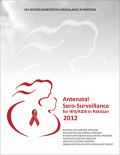
Resource | Publications,
The HIV pandemic is one of the greatest challenges that the world faces today. At the end of 2012, 34 million people were estimated to be living with the virus. There were 390,000 new infections among children under the age of 15. Most of these new infections are believed to stem from transmission in utero, during delivery (vertical transmission) or as a result of breast feeding.
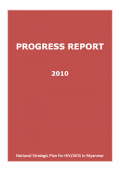
Resource | Publications,
The first multi-stakeholder National Strategic Plan on HIV in Myanmar was developed and launched in 2006. The NSP was jointly developed and agreed by the stakeholders. It called for a prioritisation of prevention interventions to address the concentrated nature of the epidemic.
This final report of the progress of the NSP I aims at giving an overview of the achievements made in these 5 years. The NSP II has been built on the successful and proven elements of the NSP I. This report tries to highlight these successes as much as the work that still needs to be done in order to reduce new infections further and to ensure that all the people in need of treatment receive ARVs.
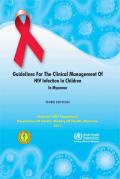
Resource | Guidelines,
This is the third edition of the Guidelines for the Management of HIV Infection in Children in Myanmar. As in the second edition, published in 2007, this document is the result of a consultative approach. It is necessary to revise and update the previous guidelines to keep up with current changes in diagnosis and management of HIV infection in children.
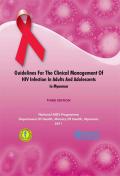
Resource | Guidelines,
These guidelines have been written to serve all medical personal treating patients with HIV in Myanmar. It is meant not only for the National AIDS-STD programme but also for local in international NGOs, hospital doctors, and general practitioners in the public and private sectors.
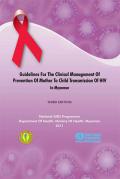
Resource | Guidelines,
Guidelines have to be standardized and simplified as much as possible, while maintaining some flexibility, so that they may be used by the largest number of health personnel who do not need to be specialist to carry out Prevention of Mother-to-Child Transmission (PMTCT) treatment for the maximum benefit of a large number of pregnant women. The public health approach is a balance between the best proven strategy and what is feasible on a large scale in resource limited setting.

Resource | Presentations,
Effective 1 January 2012, a revised application and approval process for renewals will be employed to ensure strategic investments, as described in “Options for Modification of the Application, Renewal and Approval Processes for New and Existing Investments,”.

Resource | Publications,
The HIV incidence in Bhutan has seen sharp rise over last decade; this rise has been attributable to increasing prevalence of Sexually Transmitted Infections (2.4%), strengthened HIV detection services with improved infrastructures and nevertheless the improved public awareness on the importance of getting oneself tested. Until July 2011, we have 246 total HIV cases throughout the country, and within the gap of six months the case has increased by 24 making total reported cases of 270.
Strategies have been revised to match the budget and guidelines revised to enhance and strengthen the HIV prevention, diagnosis, treatment, care and support programs. Currently, the National Program has established 4 free standing VCT centers (HISCs) and integrated VCT centers in all the district hospitals. In order to scale up the prevention of mother to child transmission, the program has prioritized to upgrade current Antenatal clinics (ANCs) with the integration of HIV PMTCT services at all levels of health care facilities.
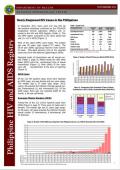
Resource | Fact Sheets,
In November 2011, there were 212 new HIV Ab seropositive individuals confirmed by the STD/AIDS Cooperative Central Laboratory (SACCL) and reported to the HIV and AIDS Registry (Table 1). This was 89% higher compared to the same period last year (n=112 in 2010) [Figure 1].
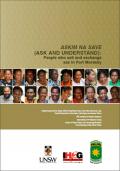
Resource | Publications,
Askim na Save (Ask and Understand): People who sell and exchange sex in Port Moresby is a comprehensive bio-behavioural study of sex work in Port Moresby in Papua New Guinea. The study was designed to fill gaps in knowledge about the sex industry in PNG and to map the sale and exchange of sex in Port Moresby to create a richer and more detailed understanding of sex workers and their vulnerability to HIV.





